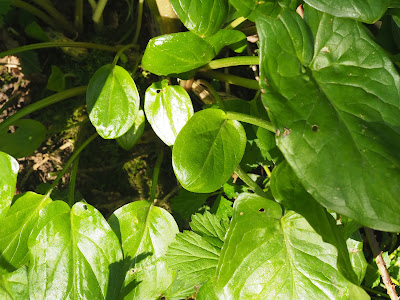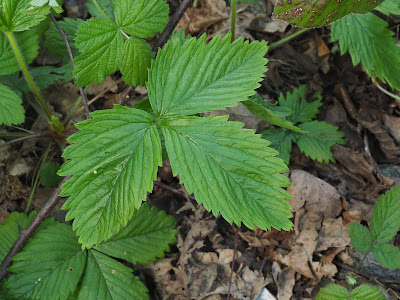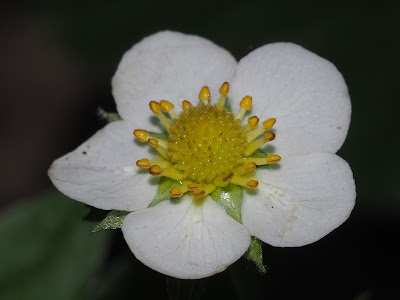Common name: Lords-and-ladies, Cuckoo-point
Scientific name: Arum maculatum 斑點疆南星
Genus: Arum 疆南星屬
Family: Araceae 天南星科, arum family
Remarks:
Origin: native
Date: 13rd, 8th April (flowering) & 6th August (fruits)

An erect, glabrous perennial, can reach up to 50 cm.
Leaf.
Leaf blade 7-20 cm. (vs leaf blade 15-35 cm in Arum italicum 意大利疆南星, Italian lords-and-ladies)
Some of the plant with the blades black-spotted.
Young leaves look very differently from mature leaves.

Enlarged young leaf.
Flower bud not yet open.

Inflorescence appears from the base of the stem above the ground.
----------------------------------------------------------------------------------------------
Flowers opened. (on 18th April)

Each inflorescence (spadix) comes from one plant. Erect
spathe 佛焰苞 (a large bract)
10-25 cm, base completely enclosing flowers. (vs erect spathe 15-40 cm, with tip drooping forward in
Arum italicum 意大利疆南星, Italian lords-and-ladies)
 Spadix 肉穗花序, 佛焰花序 7-12 cm, about half as long as spathe, upper sterile portion (appendix) dull purple (rarely yellow)
Spadix 肉穗花序, 佛焰花序 7-12 cm, about half as long as spathe, upper sterile portion (appendix) dull purple (rarely yellow). (vs spadix aboute one-third as long as spathe, upper sterile portion yellow in
Arum italicum 意大利疆南星, Italian lords-and-ladies)
Look from above to try to see the unisexual flowers hidden from the spathe.

The yellow spider-like structures just below the stipe of the dull purple appendix are the staminodes 退化雄蕊 (sterile stamens). Further below should be the fertile male flowers, pistillodes (sterile pistils) and then the fertile female flowers. But these structures could not be seen from the above photo.
Almost all the flowers in this location have the flower buds eaten half by unknown animals. (13rd April)

Enlarged to see the lower part of the spadix. The yellow spider-like structures at the top of this broken spadix are the pistillodes (sterile pistils) 退化雌蕊. Further down the spadix are the fertile female flowers (ovary and the stigma could be seen).

Another eaten half flower bud.

Enlarged to see the lowest part of the spadix, the female flowers.
----------------------------------------------------------------------------------------------
Fruiting now. (Took on 6th August at another location.)

Fruits still need some time to ripe. (6th August(
































































